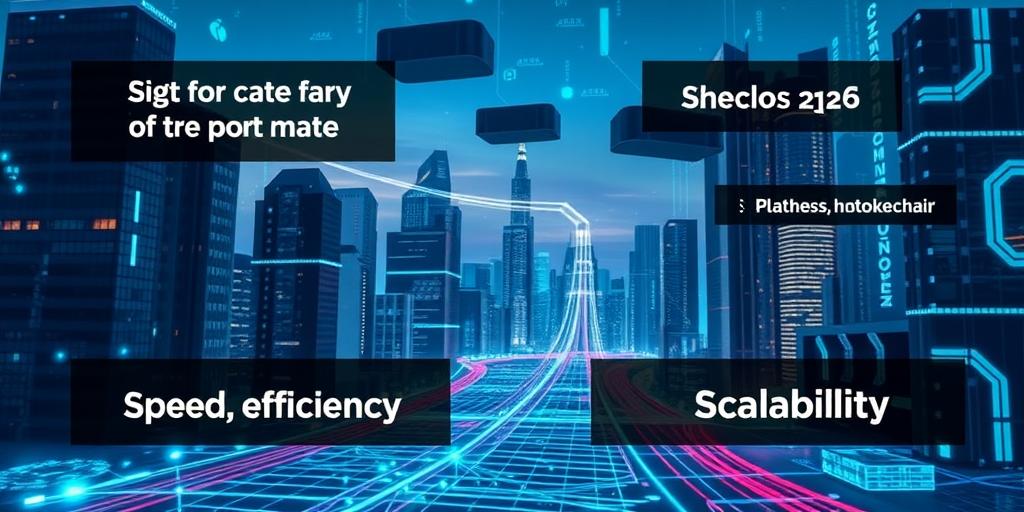The year 2024 is shaping up to be a pivotal year for blockchain scalability, with a growing focus on finding solutions that can handle the increasing demand for decentralized applications. As more and more people and businesses adopt blockchain technology, the need for scalability becomes increasingly critical. Let’s dive into the roadmap for blockchain scalability solutions in 2024, exploring the different approaches and their potential impact on the future of blockchain.
The 2024 Roadmap for Blockchain Scalability Solutions
Introduction
The Need for Scalability
Blockchain technology has the potential to revolutionize various industries, but its widespread adoption hinges on its ability to handle a large volume of transactions efficiently. The core concept of blockchain, a decentralized and immutable ledger, comes with inherent limitations in terms of transaction speed and throughput. This is where the challenge of blockchain scalability arises.
The Current Landscape
The current blockchain landscape is characterized by a multitude of approaches to address scalability. While some blockchains like Bitcoin and Ethereum are struggling with scalability limitations, others like Solana and Avalanche have implemented solutions to achieve higher throughput. However, the quest for a perfect solution continues, with ongoing research and development efforts pushing the boundaries of blockchain scalability.
Layer-1 Solutions
Layer-1 solutions focus on modifying the core protocol of a blockchain to enhance its scalability. This involves changes to the underlying consensus mechanism, data storage, or transaction processing.
Sharding
Sharding is a technique that divides the blockchain into smaller, independent shards. Each shard can process transactions independently, increasing the overall throughput of the network. This approach is used by blockchains like Ethereum 2.0 and is expected to significantly improve its scalability.
Rollups
Rollups are a popular approach that involves processing transactions off-chain and then posting a summary of the transactions back onto the main chain. This approach offers a significant improvement in scalability, as it reduces the load on the main chain while maintaining the security of the underlying blockchain.
Optimistic Rollups
Optimistic rollups assume that all transactions are valid unless proven otherwise. They rely on a fraud-proof mechanism where anyone can challenge a transaction if they believe it is fraudulent. Examples include Optimism and Arbitrum.
Zero-Knowledge Rollups
Zero-knowledge rollups use cryptography to prove the validity of transactions without revealing the actual data. This approach offers enhanced privacy and efficiency, making it a promising solution for blockchain scalability. Examples include zkSync and StarkNet.
Layer-2 Solutions
Layer-2 solutions work on top of an existing blockchain to provide additional functionality and scalability. These solutions are built as separate layers that interact with the underlying blockchain, but do not directly modify its core protocol.
State Channels
State channels allow users to transact off-chain and only post the final state of the transaction to the main chain. This significantly reduces the load on the blockchain and enables fast and cheap transactions.
Plasma
Plasma is a framework for creating scalable and secure off-chain solutions. It allows for the creation of sidechains that can process transactions faster and cheaper than the main chain. Transactions on the sidechain can be challenged and settled on the main chain, ensuring security and immutability.
Hybrid Solutions
Hybrid solutions combine elements of both Layer-1 and Layer-2 approaches to achieve optimal scalability. These solutions often leverage the strengths of both layers to create a more robust and efficient system.
Combining Layer-1 and Layer-2 Approaches
For example, a blockchain might use sharding to increase its transaction throughput, while also utilizing rollups to further offload transactions and improve scalability. This approach allows for a balanced solution that addresses both the limitations of the core protocol and the need for efficient off-chain processing.
The Future of Blockchain Scalability
The future of blockchain scalability is full of possibilities, with ongoing research and development pushing the boundaries of what’s possible.
Emerging Technologies
New technologies like quantum computing and distributed ledger technology (DLT) hold the potential to further enhance blockchain scalability. These technologies can provide faster processing speeds, greater efficiency, and enhanced security, leading to new solutions for scaling blockchain applications.
Regulatory Considerations
Regulatory considerations play a crucial role in shaping the future of blockchain scalability. As the blockchain ecosystem evolves, clear regulations are needed to ensure a safe and secure environment for innovation. These regulations need to balance the need for innovation with the need for consumer protection and financial stability.
Key Takeaways
The year 2024 promises to be a pivotal year for blockchain scalability, with a variety of solutions coming to the forefront. From Layer-1 and Layer-2 solutions to hybrid approaches, the industry is exploring diverse options to address the challenges of scaling blockchain applications. It is important to understand the trade-offs and limitations of each approach and to choose the best solution for a particular use case.
Call to Action
Whether you’re a developer building a blockchain application or a business considering adopting blockchain technology, understanding the landscape of blockchain scalability solutions is critical. Stay updated on the latest developments and explore the various options available. The future of blockchain is bright, and scalability is a key factor in realizing its full potential.




